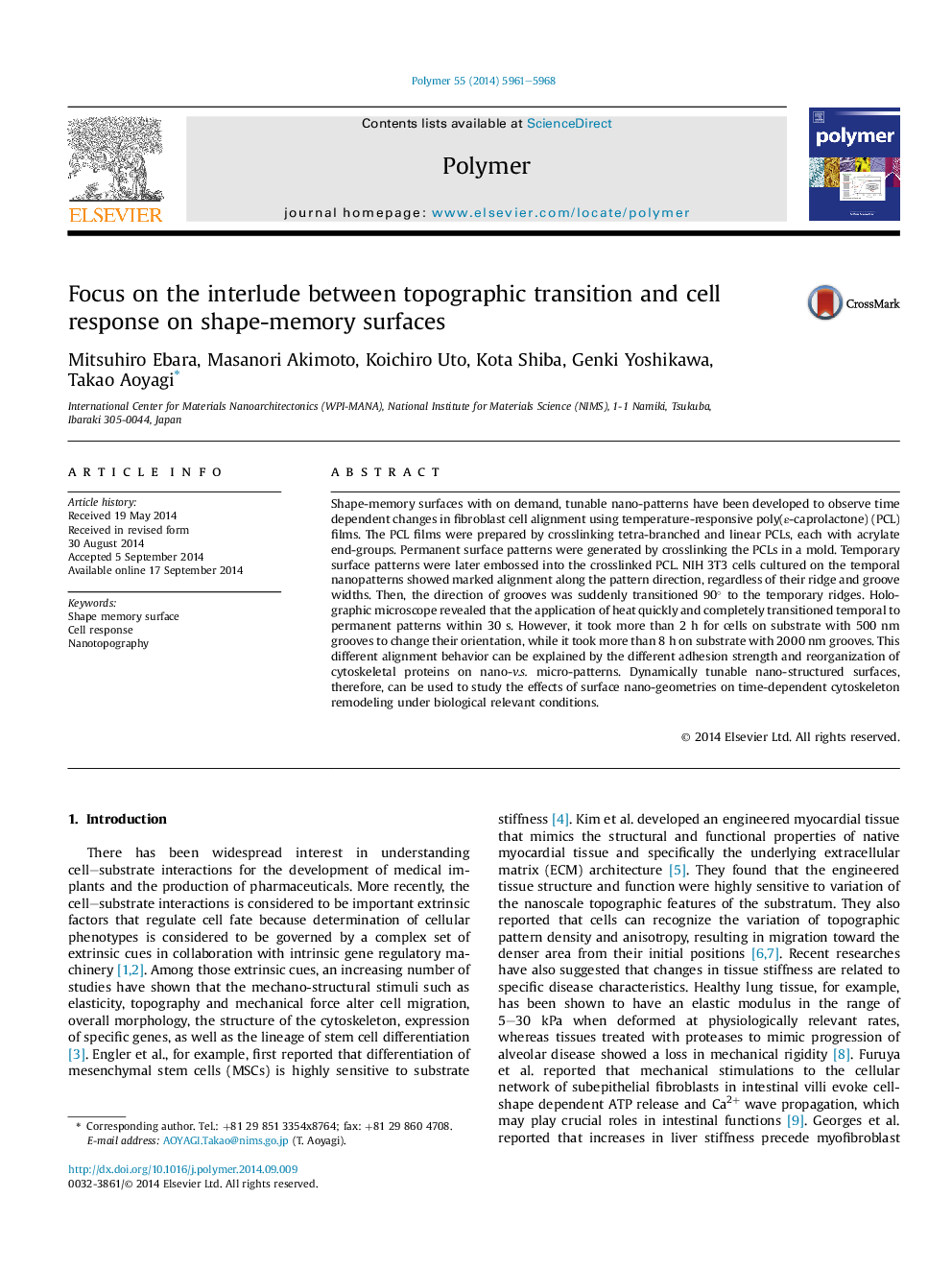| Article ID | Journal | Published Year | Pages | File Type |
|---|---|---|---|---|
| 5180846 | Polymer | 2014 | 8 Pages |
â¢Shape-memory surfaces have been developed using temperature-responsive films.â¢The time-dependent shape-memory transition was observed by holographic microscopy.â¢Cell alignment on the films before/after the shape-memory activation was analyzed.
Shape-memory surfaces with on demand, tunable nano-patterns have been developed to observe time dependent changes in fibroblast cell alignment using temperature-responsive poly(ε-caprolactone) (PCL) films. The PCL films were prepared by crosslinking tetra-branched and linear PCLs, each with acrylate end-groups. Permanent surface patterns were generated by crosslinking the PCLs in a mold. Temporary surface patterns were later embossed into the crosslinked PCL. NIH 3T3 cells cultured on the temporal nanopatterns showed marked alignment along the pattern direction, regardless of their ridge and groove widths. Then, the direction of grooves was suddenly transitioned 90° to the temporary ridges. Holographic microscope revealed that the application of heat quickly and completely transitioned temporal to permanent patterns within 30 s. However, it took more than 2 h for cells on substrate with 500 nm grooves to change their orientation, while it took more than 8 h on substrate with 2000 nm grooves. This different alignment behavior can be explained by the different adhesion strength and reorganization of cytoskeletal proteins on nano-v.s. micro-patterns. Dynamically tunable nano-structured surfaces, therefore, can be used to study the effects of surface nano-geometries on time-dependent cytoskeleton remodeling under biological relevant conditions.
Graphical abstractDownload high-res image (158KB)Download full-size image
